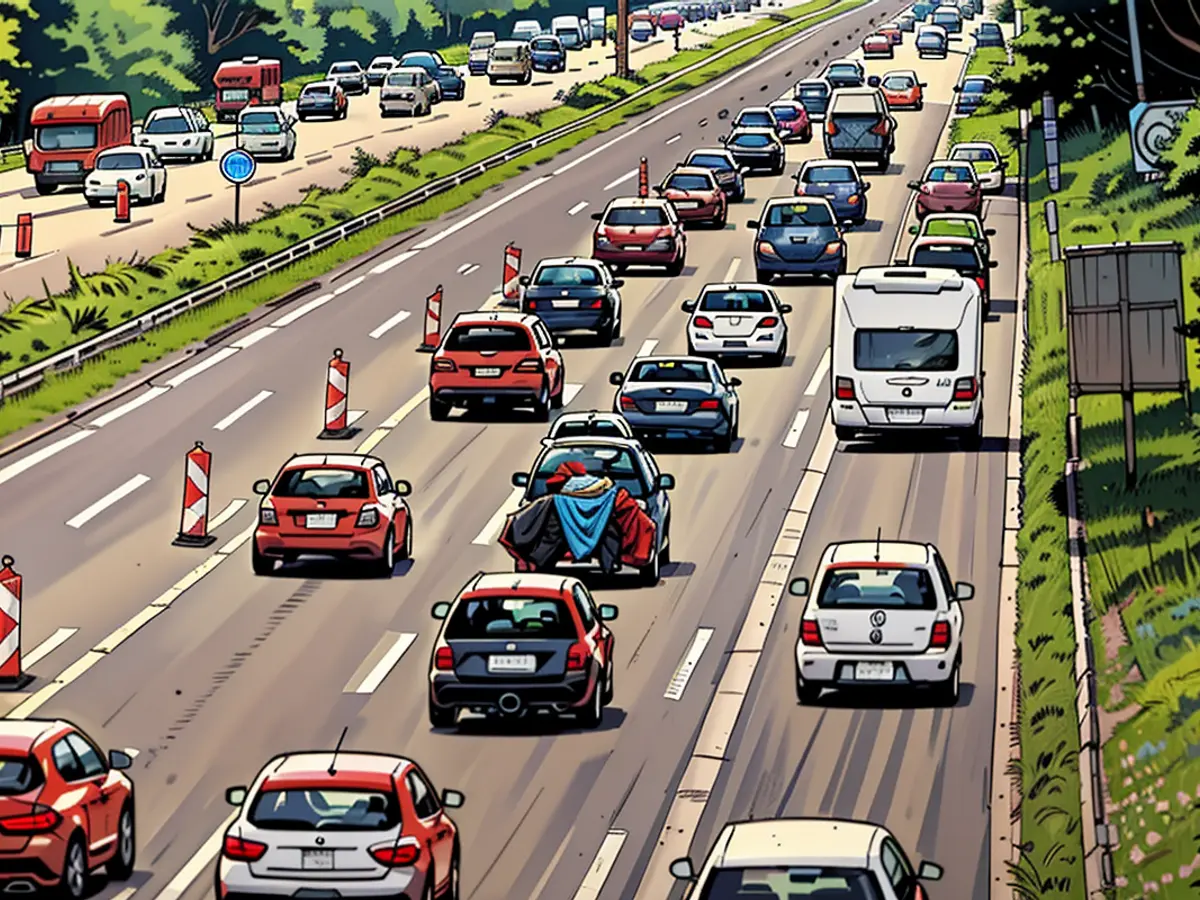Harris and Trump want to strengthen the middle class. It could use the help
“Building up the middle class will be a defining goal of my presidency,” she said at a Wisconsin rally on Tuesday. “Because here’s the thing we all here (in) Wisconsin know: When our middle class is strong, American is strong.”
Similarly, former PresidentDonald Trump has also promised to help the middle class, which he says has been hurt by the steep rise in prices in recent years.
“Under Biden and the radical left Democrats, inflation is wiping out our middle class,” he said at a Michigan rally last weekend.
Harris and Trump, like many political candidates starting with Bill Clinton in the 1992 presidential election, are targeting the middle class in part because it captures a broad swath of the nation. There’s no hard-and-fast definition of the middle class; it’s more about self-identification. And just over half of Americans consider themselves middle class, according to a recent Gallup poll.
The group’s amorphousness also makes it hard to campaign on targeted policies and then live up to those promises in office, said David Roediger, an American studies professor at the University of Kansas and author of “The Sinking Middle Class: A Political History of Debt, Misery, and the Drift to the Right.”
“When you have a group of people that’s so ill-defined and so heterogeneous, it’s hard to know what the policy outcomes would be,” he said.
Helping the middle class
Both Harris and Trump have made big – but very general – promises to aid the middle class, as well as those who consider themselves working class, who make up just under a third of US residents, Gallup found.
Harris, who only announced her candidacy last Sunday after President Joe Biden said he would not stand for reelection, has yet to unveil a platform with specific policy recommendations. But she’s provided a glimpse into her areas of focus in her speeches over the past week: forgiving student debt; making health care, child care and elder care more affordable; enacting paid family leave; and enabling seniors to retire with dignity.
Some of her prior solutions as a 2020 presidential candidate and senatorcentered on tax credits. To help middle-class and working families keep up with their living expenses, she proposed providing them with a refundable tax credit of up to $6,000 a year (per couple). Titled the LIFT the Middle Class Act, or Livable Incomes for Families Today, the bill would allow taxpayers to receive the benefit – up to $500 – on a monthly basis so families don’t have to turn to payday loans with very high interest rates.
As a senator, she introduced the Rent Relief Act, which would establish a refundable tax credit for renters who annually spend more than 30% of their gross income on rent and utilities. The amount of the credit would range from 25% to 100% of the excess rent, depending on the renter’s income.
Harris was also an original co-sponsor of the Child Care for Working Families Act in 2017, which would have capped the cost of care at 7% of household income for certain parents. And in her initial run for the White House, she proposed up to six months of paid family and medical leave as part of her “Children’s Agenda.” Other parts of that package included Black entrepreneurship plans, an equal pay proposal and a push for higher salaries for teachers.
Plus, Harris has been a forceful proponent of the White House efforts to ban medical debt from credit reports, which she said is critical to people’s financial health. The Biden administration proposed such a ban last month.
“Medical debt makes it more difficult for millions of Americans to be approved for a car loan, a home loan or a small business loan, all of which in turn makes it more difficult to just get by, much less get ahead,” Harris said on a call with reporters in June. “And that is simply not fair, especially when we know that people with medical debt are no less likely to repay a loan than those without medical debt.”
Medical debt is a big burden for the middle class, with about a quarter of this group having unpaid medical bills in 2020, according to Third Way, a think tank. That’s a larger share than those lower and higher on the income ladder.
Trump, meanwhile, is focusing on how the swift jump in prices under the Biden administration is “wiping out our middle class,” as he put it at one recent rally. Reversing inflation is one of the top promises in the platform Republicans released ahead of the party’s convention earlier this month.
“The Biden/Kamala record-high inflation crisis has hurt middle class working families by robbing them of thousands of dollars every month just to have the same quality of life as they did a few years ago under President Trump,” Karoline Leavitt, the campaign’s national press secretary, said in an email to CNN.
“When re-elected, President Trump’s top priority will be reigniting our energy industry to bring down inflation and the cost of living for all Americans,” she continued. “President Trump has also promised to cut taxes for the middle class once again and end taxes on tips for service workers to put more hard-earned money back into their pockets.”
The former president last month floated eliminating the tax on tips – a new campaign promise – at a rally in Nevada, a key swing state and one with a sizeable number of service industry workers. He vowed “to do that right away, first thing in office.”
Trump has mentioned a middle-class tax cut but has yet to provide details on it. The individual tax provisions of the Republicans’ 2017 tax cut law, which reduced taxes for most Americans but benefited the wealthy the most, are set to expire at the end of next year. Trump has promised to extend all the expiring measures.
The party platform lists several general measures long favored by Republicans that they say will bring down prices. If Trump wins the election, he and the GOP will lift restrictions on domestic energy production and terminate the Biden administration’s green energy efforts, which the platform says will “immediately slash inflation” and power homes, cars and factories with affordable energy.
Republicans aim to stabilize and grow the economy by reining in what they callwasteful federal spending and cutting costly regulations, and the partyintends to reduce commodity prices by restoring “peace through strength,” according to the platform.
Another top policy is to stop illegal immigration, which the party says has driven up the cost of housing, education and health care for American families, the platform says.
However, other Trump proposals could potentially hike the cost of living for the middle class. Trump’s tariff proposals – including a 10% tariff on all US imports – would cost the typical middle-income household at least $1,700 a year, according to researchers at the Peterson Institute for International Economics.
Shrinking middle class
There’s good news and bad news to tell about the middle class these days.
The middle class is smaller than it was in 1971, according to a recent Pew Research Center study.Only 51% of Americans lived in middle-class households last year, compared with 61% just over five decades earlier.
Pew defines middle-income households as those with an income that is two-thirds to double that of the US median household income, after incomes have been adjusted for household size. The median household income for the middle class was $106,092 last year.
The good news is that more middle-class families have moved up the income ladder than down – a sign of economic progress, according to Pew. Some 19% of Americans were in upper-income households last year, compared with 11% in 1971, while 30% were in lower-income households last year, compared with 27% in 1971.
However, the bad news is that middle-class income has grown more slowly than that of their higher-income peers – 60% compared with 78% between 1970 and 2022, Pew found. Income among the lowest tier grew 55% during that period.
Plus, the share of total household income held by the middle class has plummeted – from 62% in 1970 to 43% in 2022, while upper-income families accounted for 48% of total income in 2022, compared with 29% in 1970.
However, income can be a poor measure of defining the middle class, some experts say. About one-third of middle-income earners are unable to spend as if they are middle class, a 2022 RAND study found.
“Many middle-class households consistently stretch their budgets or break even to afford a basic standard of living,” RAND researchers found. “Others spend within their means but doing so requires them to live in ‘consumption poverty,’ which we define as necessity spending lower than the federal poverty level.”
“In both of these cases, households that are middle class by income may not have access to a middle-class lifestyle,” the researchers said.
Inflation has worsened the financial anxiety of some middle-class Americans, particularly renters looking to buy a home or parents who want to help pay for their children’s college education. These are two accomplishments that many people think are necessary to maintain their middle-class status, though home prices and tuition have risen faster than incomes, making them harder to afford, said Jeffrey Wenger, senior economist at RAND.
“There’s a sense of uncertainty that’s worse now in this generation of the middle class than previous generations,” he said.
- In her presidential campaign, Kamala Harris has emphasized various policies aimed at supporting the middle class, such as proposing a refundable tax credit of up to $6,000 annually and pushing for paid family and medical leave.
- According to a recent Gallup poll, more than half of Americans consider themselves to be part of the middle class, which makes it a significant demographic that political candidates often target, as shown by both Harris's and former President Trump's promises to aid this group.








